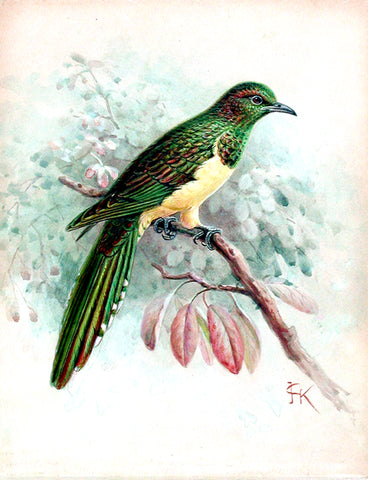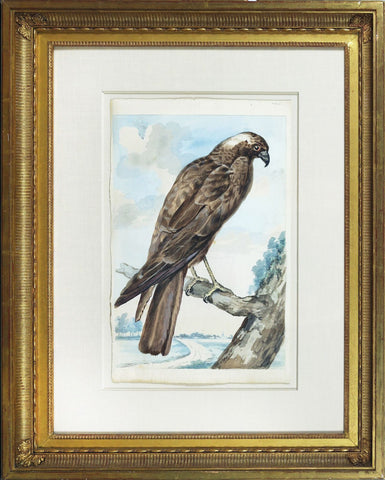
Johannes Gerardus Keulemans (Dutch, 1842-1912), Study of a bird
Johannes Gerardus Keulemans (Dutch, 1842-1912)
Study of a bird
Watercolor on paper laid on board
Signed with initials JGK l.l.
Paper size: 10 1/2 x 8
Framed size: 21 1/2 x 19 1/4 in.
JOHN GERRARD KEULEMANS (DUTCH, 1842-1912)
One of the foremost ornithological illustrators of the nineteenth-century, John Gerrard Keulemans, has received less recognition than is his due simply because he rarely published his own books, but rather contributed to a number of the most notable bird books of the time. Dutch by origin, he was one of a select band of continental European bird and animal artists to be attracted to England during the middle and latter half of the nineteenth century. Throughout his acclaimed career, his distinctive and exquisitely rendered bird illustrations graced publications including Daniel Giraud Elliot's monographs on the pheasants and hornbills, Henry Eeles Dresser's History of the Birds of Europe, Bowdler Sharpe's monograph on kingfishers, and George E. Shelley's on sunbirds, as well as his own Natural History of the Cage Birds. Keulemans executed and lithographed more than one hundred plates for the British Museum Catalogue of Birds, attesting to his extraordinary diversity and ability to depict birds of widely different species from parrots to birds of prey. His illustrations of birds for works related to geographic regions are equally diverse, covering Great Britain, Europe, Abyssinia, Australia, New Zealand, India, South Africa, and Central America.
Born in Rotterdam in 1842, Keulemans worked for several years at the Leyden Museum. Like his fellow artist Josef Wolf, he was encouraged by the influential Professor Hermann Schlegel, who gave him several important commissions. Like other protegés of Professor Schlegel, he was soon lured away by London's outstanding opportunities, which was then the center for ornithological publications. John Gould had provided the first commissions for Wolf in London, and it was Gould's friend Richard Bowdler Sharpe was responsible for luring Keulemans to England in 1869. By the turn of the century, any author of a bird-book requiring an illustrator almost automatically thought first of Keulemans. Although many of the publications that Keulemans contributed to were ostensibly documentary, his magnificent illustrations inevitably transcended mere science, distinguished by their glorious color and sophisticated compositions.
Keulemans's original work is scarce, and only in his watercolors can one attain a full understanding of his mastery as an ornithological artist. Some Keulemans' original watercolors are in the collection of the British Museum or other institutions, and few become available to private collectors. This magnificent watercolor represents a valuable and unusual opportunity to attain an original work by one of the foremost bird artists working in Victorian Britain.
or by email at loricohen@aradergalleries.
We Also Recommend





